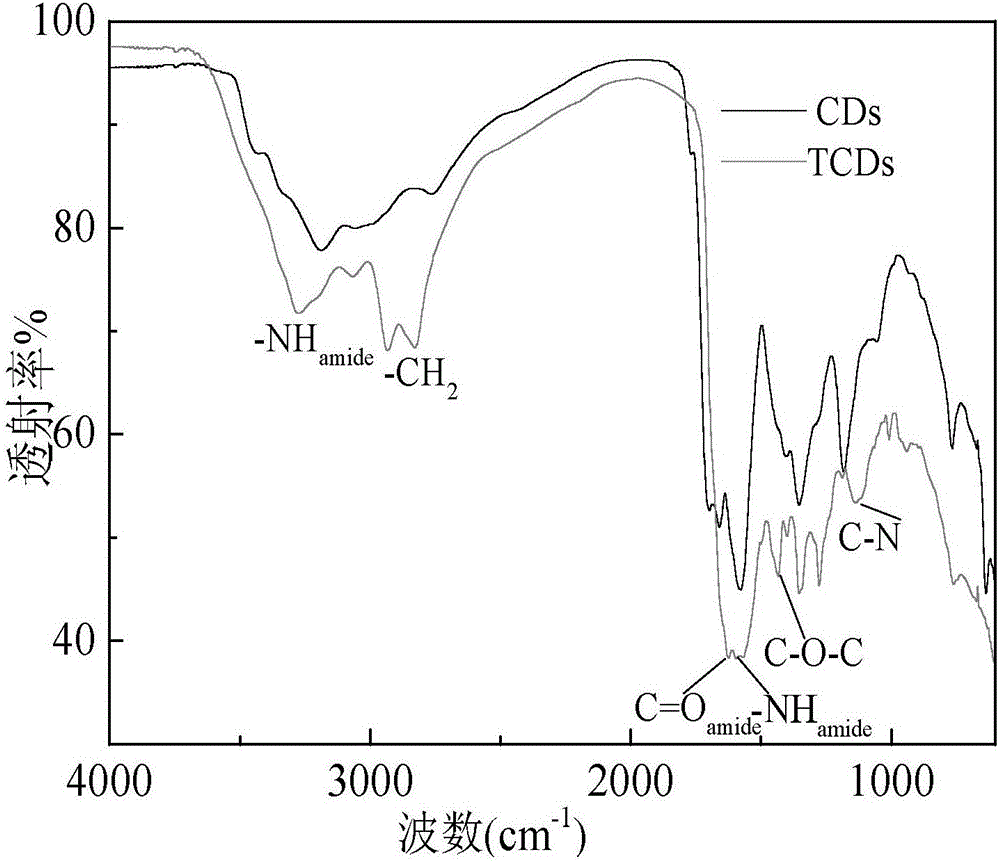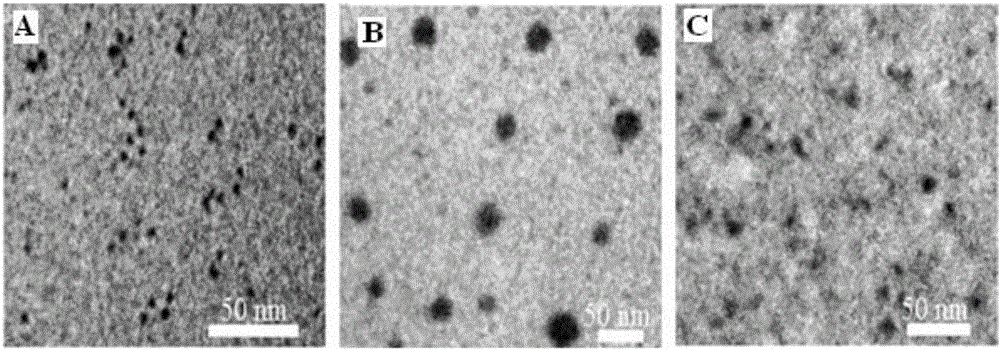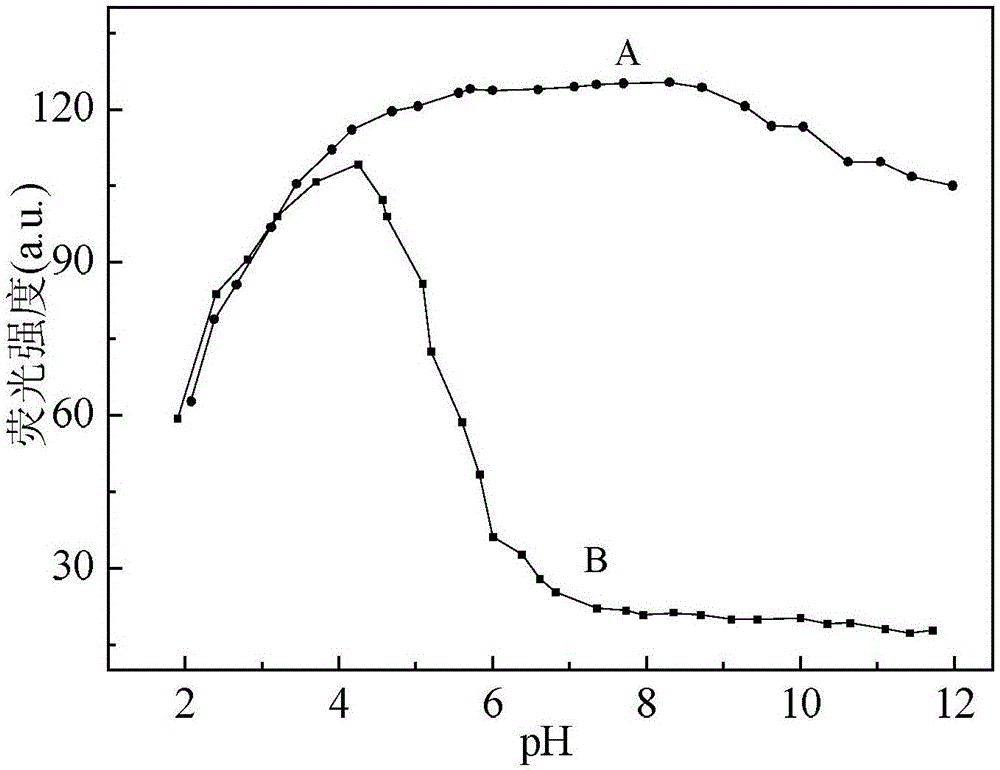Surface modified carbon nano point, preparation thereof, application of surface modified carbon nano point used as fluorescence probe for detecting Cu2+ and glutathione
A technology of carbon nanodots and surface modification, applied in the field of nano-fluorescence sensors, can solve the problems of easy interference of fluorescent probes by other metal ions, high preparation cost, complicated preparation steps, etc.
- Summary
- Abstract
- Description
- Claims
- Application Information
AI Technical Summary
Problems solved by technology
Method used
Image
Examples
specific Embodiment approach 1
[0038] Embodiment 1: The surface-modified carbon nano-dots in this embodiment are triethylenetetramine-modified carbon nano-dots with a particle size of 3-5 nm.
specific Embodiment approach 2
[0039] Specific embodiment two: the preparation method of the surface-modified carbon nano-dot described in specific embodiment one is carried out according to the following steps:
[0040] 1. The mass ratio of carbon nano-dots and triethylene tetramine is 1: (0.1-10) adding carbon nano-dots and triethylene tetramine to ethanol and mixing uniformly to obtain a mixture;
[0041]2. Heating the mixture to reflux for 5-48 hours to obtain a crude product;
[0042] 3. Rotate the crude product to remove ethanol, and then wash the crude product with benzene for 1 to 5 times. After centrifugation, dissolve the solid phase with ultrapure water to obtain a solution, and then filter the solution; vacuum-dry the filtrate to obtain the surface Modified carbon nanodots (TCDs).
specific Embodiment approach 3
[0043] Specific embodiment three: the difference between this embodiment and specific embodiment two is that the carbon nano-dots (CDs) described in step one are mixed by urea and citric acid in the ratio of mass ratio 1: (1~6), and then passed A carbon-rich nanoparticle prepared by microwave heating; the others are the same as in the second embodiment.
PUM
| Property | Measurement | Unit |
|---|---|---|
| particle diameter | aaaaa | aaaaa |
| diameter | aaaaa | aaaaa |
| concentration | aaaaa | aaaaa |
Abstract
Description
Claims
Application Information
 Login to View More
Login to View More - R&D
- Intellectual Property
- Life Sciences
- Materials
- Tech Scout
- Unparalleled Data Quality
- Higher Quality Content
- 60% Fewer Hallucinations
Browse by: Latest US Patents, China's latest patents, Technical Efficacy Thesaurus, Application Domain, Technology Topic, Popular Technical Reports.
© 2025 PatSnap. All rights reserved.Legal|Privacy policy|Modern Slavery Act Transparency Statement|Sitemap|About US| Contact US: help@patsnap.com



